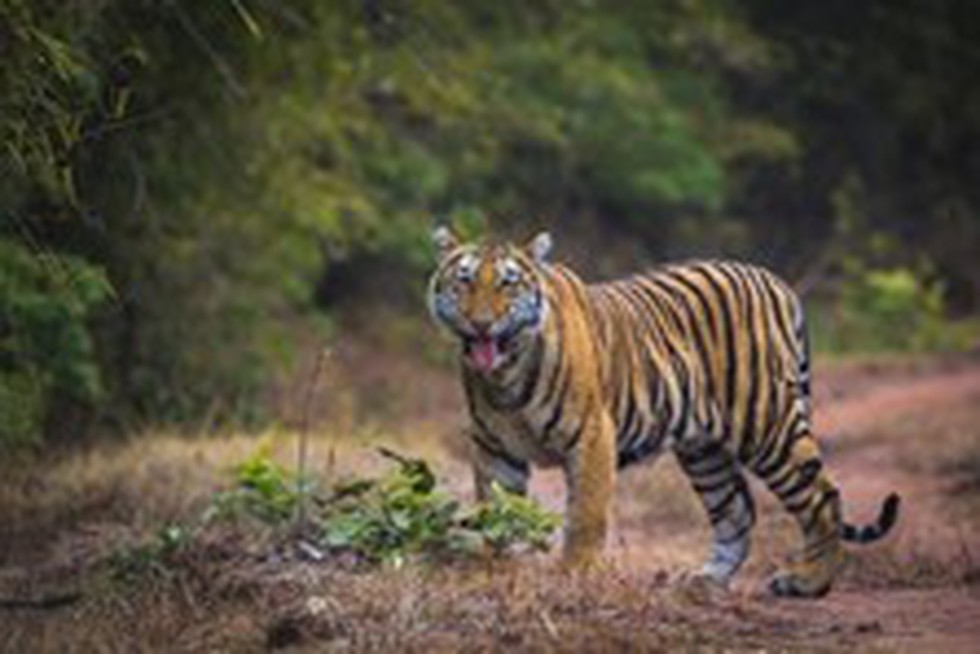
About Bandhavgarh National Park:
- Location:
- It is located in the Umaria district of Madhya Pradesh.
- It is spread over the Vindhya hills.
- It was declared a national park in 1968 and then became Tiger Reserve in 1993.
- It is known for the Royal Bengal Tigers. The density of the tiger population at Bandhavgarh is the highest known in India as well as in the world.
- The park derives its name from the most prominent hillock in the area, which was said to be given by Hindu Lord Rama to his brother Lakshmana to keep a watch on Lanka. Hence the name Bandhavgarh (Sanskrit: Brother's Fort).
- The national park was the former hunting preserve of the Maharaja of Rewa.
- Topography: Varies between steep ridges, undulating forests and open meadows.
- Vegetation: It is mostly of dry deciduous type.
- Flora:
- The vegetation of Bandhavgarh is specially filled with Sal forest in the valleys, and Bamboo stretches on the lower slopes of the region.
- Some of the most famous floral species include Saj (Terminalia tomentosa), Dhaora (Anogeissus latifolia), Tendu, Arjun (Terminalia arjuna), Amla (Emblica officinalis), Palas (Butea monosperma) etc.
- Fauna:
- The important prey species consists of chital, sambhar, barking deer, nilgai, chinkara, wild pig, chowsingha, langur and rhesus macaque.
- Dependent upon them are the major predators like tiger, leopard, wild dog, wolf and jackal.
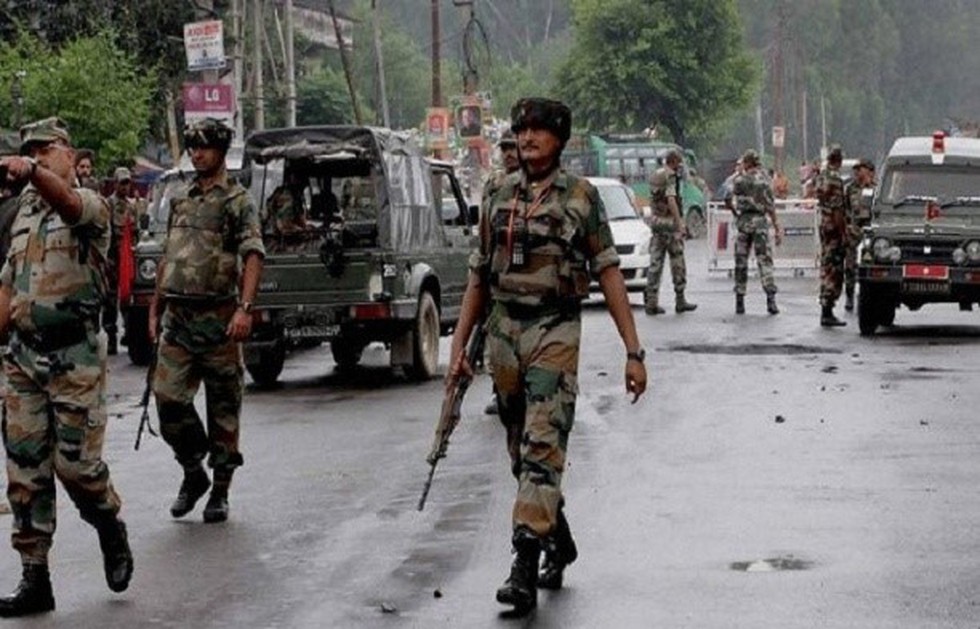
About Article 355 of the Indian Constitution:
- It is a part of emergency provisions contained in Part XVIII of the Constitution of India, from Article 352 to 360.
- It empowers the central government to take all necessary steps to protect a state against internal disturbances and external aggression.
- This article empowers the Centre to take necessary steps to protect a state from any kind of threat, be it internal or external.
- The provision is designed to ensure that the government can act swiftly and decisively in the event of any disturbance or threat to the peace and security of the country.
- Exact definition:
- The exact definition of Article 355 in the Constitution of India is, “It shall be the duty of the Union to protect every State against external aggression and internal disturbance and to ensure that the government of every State is carried on in accordance with the provisions of this Constitution.”
3. Black Sea Grain Initiative
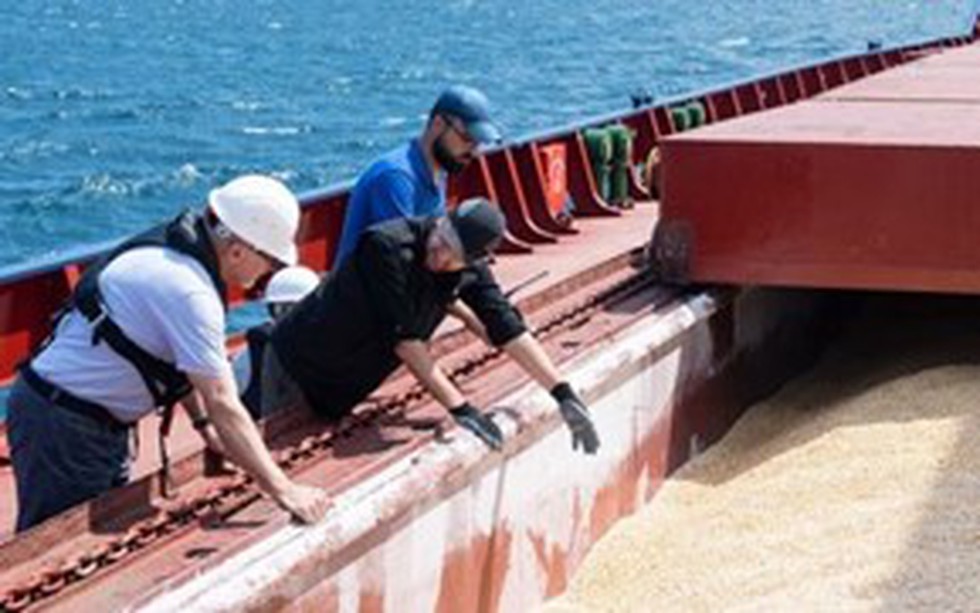
About Black Sea Grain Initiative:
- It was set up to resume vital food and fertilizer exports from Ukraine to the rest of the world.
- It was brokered between Russia and Ukraine by the United Nations and Turkey.
- The initiative allowed exports of grain, other foodstuffs, and fertilizer, including ammonia, to resume through a safe maritime humanitarian corridor from three key Ukrainian ports: Chornomorsk, Odesa, and Yuzhny/Pivdennyi, to the rest of the world.
- Joint Coordination Centre (JCC):
- A JCC was established to monitor the implementation of the Initiative.
- JCC Centre is hosted in Istanbul and includes representatives from Russia, Türkiye, Ukraine, and the United Nations.
- The UN acts as the Secretariat for the Centre.
- Procedure:
- Vessels wishing to participate in the Initiative will undergo inspection off Istanbul to ensure they are empty of cargo.
- They then sail through the maritime humanitarian corridor to Ukrainian ports to load.
- The corridor is monitored 24/7 to ensure the safe passage of vessels.
- Vessels on the return journey will also be inspected at the inspection area off Istanbul.
Key Facts about Black Sea:
- It is an inland sea between Eastern Europe and Western Asia.
- It is bound by Ukraine to the north and northwest, Russia and Georgia to the east, Turkey to the south, and Bulgaria and Romania to the west.
- It links to the Sea of Marmara through the Strait of Bosphorus and then to the Aegean through the Strait of Dardanelles.
4. Project Dantak

About Project Dantak:
- Project Dantak is an overseas project of the Border Roads Organisation (BRO)under the Ministry of Defence of India.
- It was established on 24 April 1961 as a result of an agreement between Jigme Dorji Wangchuck, the third king of Bhutanand then Prime Minister of India Jawahar Lal Nehru.
- It is primarily focused on developing infrastructure and providing connectivity in remote areas of Bhutan.
- It was tasked to construct the pioneering motorable roads in Bhutan.
- It completed the road connecting Samdrup Jongkhar to Trashigang in 1968. In the same year, Thimphu was connected to Phuentsholing by Dantak.
- Some other notable projects executed by the project include the construction of Paro Airport, Yonphula Airfield, Thimphu – Trashigang Highway, Telecommunication & Hydro Power Infrastructure, Sherubtse College, Kanglung and India House Estate.
- The project recruits local workers from Bhutan as well as Indian workers from adjoining districts along the India-Bhutan border.
5. Kaladan Multi-Modal Transit Transport Project
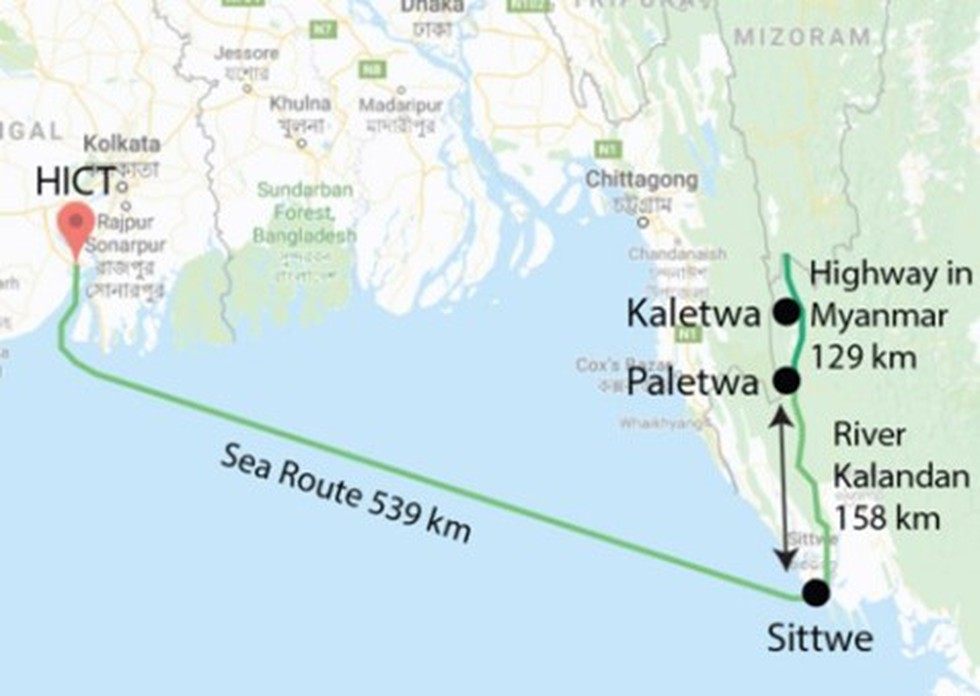
About Kaladan Multi-Modal Transit Transport Project:
- Kaladan Project would link India and Myanmar via the Bay of Bengal.
- It was jointly identified by India and Myanmar to create a multi-modal mode of transport for the shipment of cargo from the eastern ports of India to Myanmar as well as to the North-Eastern part of India through Myanmar.
- It is being constructed by India under the Grant in Aid Scheme.
- Once completed, it will link Kolkata with the Sittwe seaport in Rakhine state in Myanmar, primarily over the Bay of Bengal – covering over 500 km.
- The project envisaged four important stages:
- Kolkata to Sittwe waterway;
- Sittwe to Paletwa inland (River Kaladan) waterway;
- Paletwa to India-Myanmar border post in Myanmar;
- Finally, linking the road to Lawngtlai in Mizoramas part of the project’s last leg;
- Benefits:
- The project is expected to contribute to the economic development of the North-Eastern States of India.
- It also provides a strategic link to the North-East, thereby reducing pressure on the Siliguri Corridor.
6. World Environment Day

About:
- Objective of the day: World Environment Day is the United Nations day for encouraging worldwide awareness and action to protect our environment.
- Date of observance: Every year on 5th of June.
- Why June 5? To mark the first day of The United Nations Conference on the Human Environment which was held in Stockholm, Sweden from June 5–16 in 1972.
- First year of observance of WED: In 1974 the first WED was held with the theme "Only One Earth".
- The theme for World Environment Day on 5 June 2023 will focus on solutions to plastic pollution under the campaign #BeatPlasticPollution.
7. Central Asian Flyway (CAF)

About:
- Central Asian Flyway (CAF) covers a large area of Eurasia between the Arctic and Indian Oceans.
- This flyway comprises several important migration routes of birds.
- Including India, there are 30 countries under the Central Asian Flyway.
- At the 13th meeting of the Conference of Parties (CoP) to the Convention on Migratory Species (CMS), held at Gandhinagar in February, 2020, a resolution (UNEP/CMS/Resolution 12.11 (Rev.COP13) and Decision 13.46 were adopted initer-alia providing for establishing, by COP14, under the umbrella of CMS an institutional framework, under the leadership of India with the aim to agree on conservation action for migratory birds.
- With a view to fulfill its commitment, India is organizing two day online meeting on 6th -7th October 2021 with CAF Range Countries, anchored in Wildlife Institute of India.
- Approximately one in five of the world's 11,000 bird species migrate, some covering enormous distances.
- Conserving migratory birds requires cooperation and coordination along the entire flyway between countries and across national boundaries.
8. Giani Zail Singh
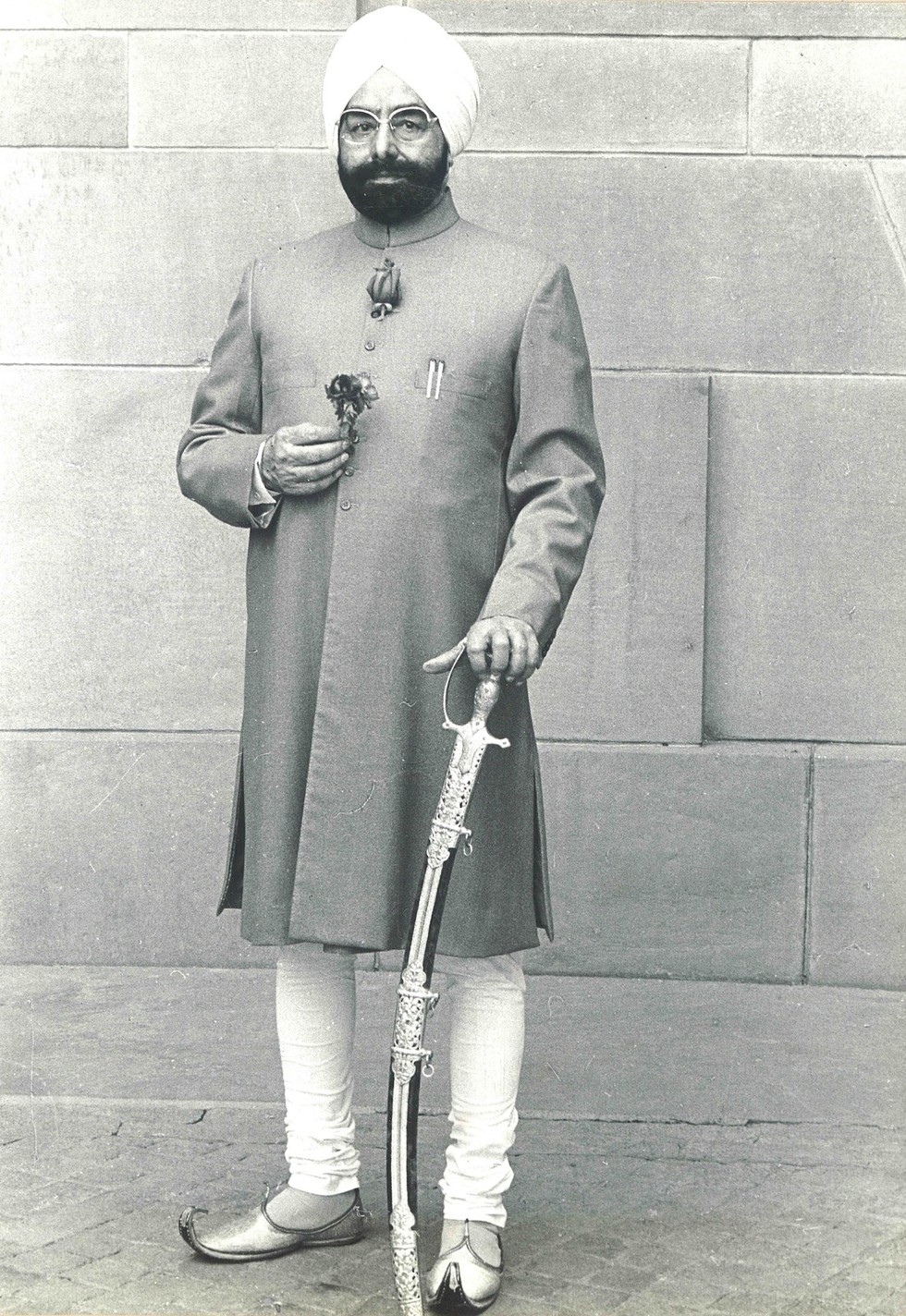
About:
- Name: He was born as Jarnail Singh, but later changed his name to Zail Singh. He was given the title of Giani as he was educated and learned about Guru Granth Sahib and other Sikh scriptures.
- Political career: Prior to his presidency, he was a politician with the Indian National Congress party, and had held several ministerial posts in the Union Cabinet, including that of Home Minister. He also served as the Chief Minister of Punjab (1972–77).
- NAM: He served as the Secretary-General of the Non-Aligned Movement from 1983 to 1986.
9. Cyclone
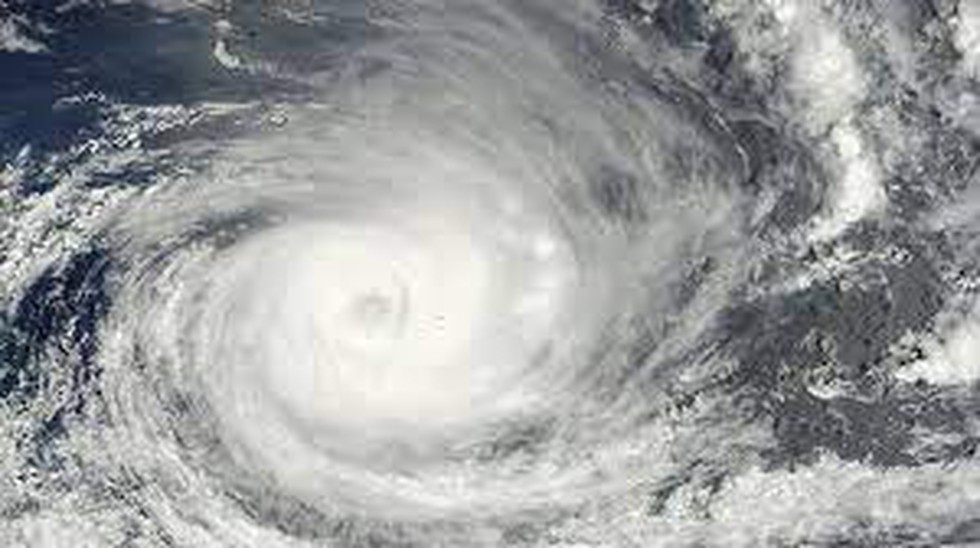
About:
- Cyclones are centres of low pressure surrounded by closed isobars and having increasing pressure outwards.
- As air enters an area of low pressure from all directions, the Coriolis Effect bends the direction of the wind to the right of its path.
- This creates a counter clockwise rotation around the low and convergence near the centre of the system. As the air collides near the centre it is forced aloft where divergence takes air away from the centre of the system.
- A Cyclone is a system of low level convergence and high level divergence with a rising column of air in the centre of the rotating air mass. If the upper air is not diverging then there cannot be a cyclone present.
Cyclones are broadly of two types:
- Temperate cyclones (caused in middle and high latitudes, thus does not occur in India)
- Tropical cyclones
Tropical Cyclones
- Cyclones developed in the regions between the Tropic of Cancer and Tropic of Capricorn, are called tropical cyclones.
- The weather conditions of low latitudes, mainly rainfall regimes are largely controlled by tropical cyclones.
- Tropical cyclones usually develop in summer season in the vicinity of Inter-Tropical Convergence Zone (ITCZ) over warm ocean surface.
- Tropical cyclones are one of the mechanisms by which surface heat energy is redistributed from the equator to the poles.
- Tropical cyclones are known by various names in different parts of the world.
- In the North Atlantic Ocean and the eastern North Pacific they are called hurricanes, and in the western North Pacific around the Philippines, Japan, and China the storms are referred to as typhoons.
- In the western South Pacific and Indian Ocean they are variously referred to as severe tropical cyclones, tropical cyclones, or simply cyclones.
- All these different names refer to the same type of storm.
Conditions necessary for development:
- Tropical cyclone is like a heat engine which is energized by latent heat of condensation. Generally, tropical cyclones are formed due to low pressure of thermal origin.
- The conditions favourable for the formation and intensification of tropical cyclone storms are:
- Large sea surface with temperature higher than 27° C
- Presence of the Coriolis force
- Small differences in the vertical wind speed
- A pre-existing weak- low-pressure area or low-level-cyclonic circulation
- Upper divergence above the sea level system.
- Having these conditions met is necessary, but not sufficient as many disturbances that appear to have favorable conditions do not develop.
10. Bastille Day Parade
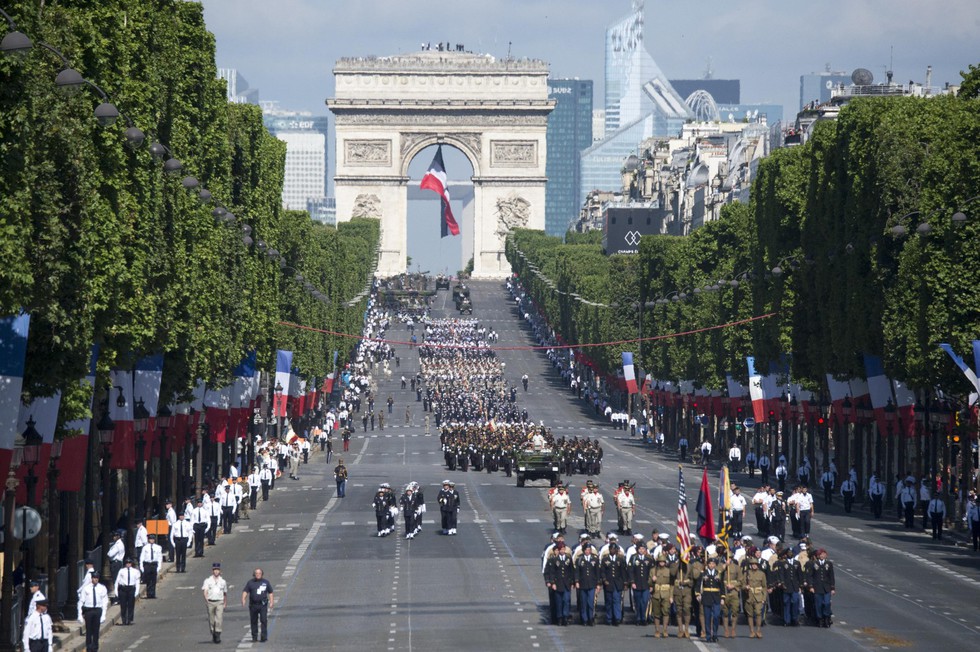
What is France's Bastille Day parade?
- July 14 is marked as France’s National Day.
- One of the revolutionary days in Paris and now a national holiday, the July 14 ("Bastille Day") is celebrated with a mixture of solemn military parades and easygoing dancing and fireworks.
- The storming of the Bastille on July 14, 1789 has been commemorated in France for more than a century.
- Every Bastille Day, Paris’ famous avenue des Champs-Elysées hosts a military parade - similar to India's Republic Day parade on Kartavya Path.
- French heads of state have been the Republic Day guests of honour five times since 1951.
- Prime Minister Narendra Modi will be the 2nd Indian PM to be the guest of honour at Bastille Day, after Manmohan Singh in 2009.



.jpg)

























































































































































.png)
.png)
.png)
.png)
.png)


.png)
.png)
.png)





.png)
.png)






.png)
.png)
.png)
.png)
.png)
.png)
.png)
.png)
.png)

.png)







.png)
.png)


.png)
.png)
.png)


.png)

.png)
.png)





.jpg)

.png)
.png)


.png)

.png)
.png)
.png)

.jpg)

.jpg)


.png)

.png)
.png)
.png)
.png)
.png)
.png)
.png)
.png)
.png)
.png)




.png)

.png)





.png)
.png)
.png)
.png)
.png)
.png)
.png)
.png)
.png)
.png)
.jpg)
.jpg)

.png)
.png)
.png)
.png)
.png)
.png)
.png)
.png)
.png)
.png)
.png)
.png)
.png)
.png)
.png)
.png)
.png)
.png)
.png)
.png)
.png)
.png)



.png)
.png)

.jpg)
.jpg)

.jpg)
.jpg)
.jpg)
.jpg)
.jpg)








.jpg)
.jpg)
.jpg)
.jpg)
.jpg)

















.jpg)
.jpg)







.jpg)


















.jpg)
.jpg)






























































































.jpg)
.jpg)


























.jpg)

.jpg)










.jpg)








.jpg)




.jpg)










.jpg)


















.jpg)












































.jpg)














.jpg)
.jpg)
.jpg)





.jpg)

.jpg)
.jpg)





































































.jpg)


































.jpg)
.jpg)
















































.jpg)












.jpg)


.jpg)




.jpg)
.jpg)
.jpg)

.jpg)
.jpg)
.jpg)
.jpg)

.jpg)
.jpg)
.jpg)

.jpg)
.jpg)
.jpg)
.jpg)
.jpg)
.jpg)
.jpg)
.jpg)

.jpg)


.jpg)
.jpg)
.jpg)
.jpg)
.jpg)
.jpg)
.jpg)
.jpg)
.jpg)
.jpg)











.jpg)
.jpg)





.jpg)
.jpg)
.jpg)
























.jpg)
























.jpg)









.jpg)
.jpg)







.jpg)
.jpg)









































.jpg)
.jpg)
.jpg)
.jpg)
.jpg)

.jpg)
.jpg)
.jpg)
.jpg)
.jpg)


.jpg)
.jpg)
.jpg)
.jpg)
.jpg)

.jpg)
.jpg)
.jpg)
.jpg)
.jpg)
.jpg)
.jpg)
.jpg)
.jpg)
.jpg)
.png)

.png)
.png)

.png)
.png)
.png)
.png)


.jpg)
.jpg)

.jpg)
.jpg)
.jpg)

.png)
.png)
.png)
.png)
.png)
.png)
.png)

.png)
.png)
.png)
.png)
.png)
.png)
.png)
.png)
.png)
.png)





































































-min.png)



.png)




.png)








































